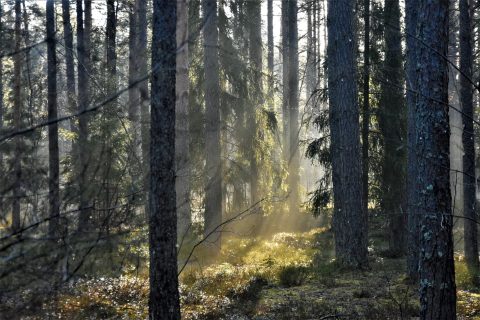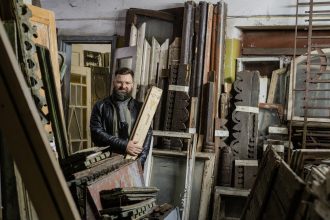Since 2021, artists Anta Marija Antanavičiūtė and Julija Račiūnaitė have been exploring the wooden gazebos, which are very often found in public and private recreational spaces in Lithuania, and whose main architectural element is the snake-like, writhing wooden curves. The unexplored and unexamined dominance of curved aesthetics wherever a Lithuanian needs rest and relaxation opens the way for entertaining speculations about this phenomenon and its related (pseudo) organic, authentic, mythological, and ethnographic subtexts.
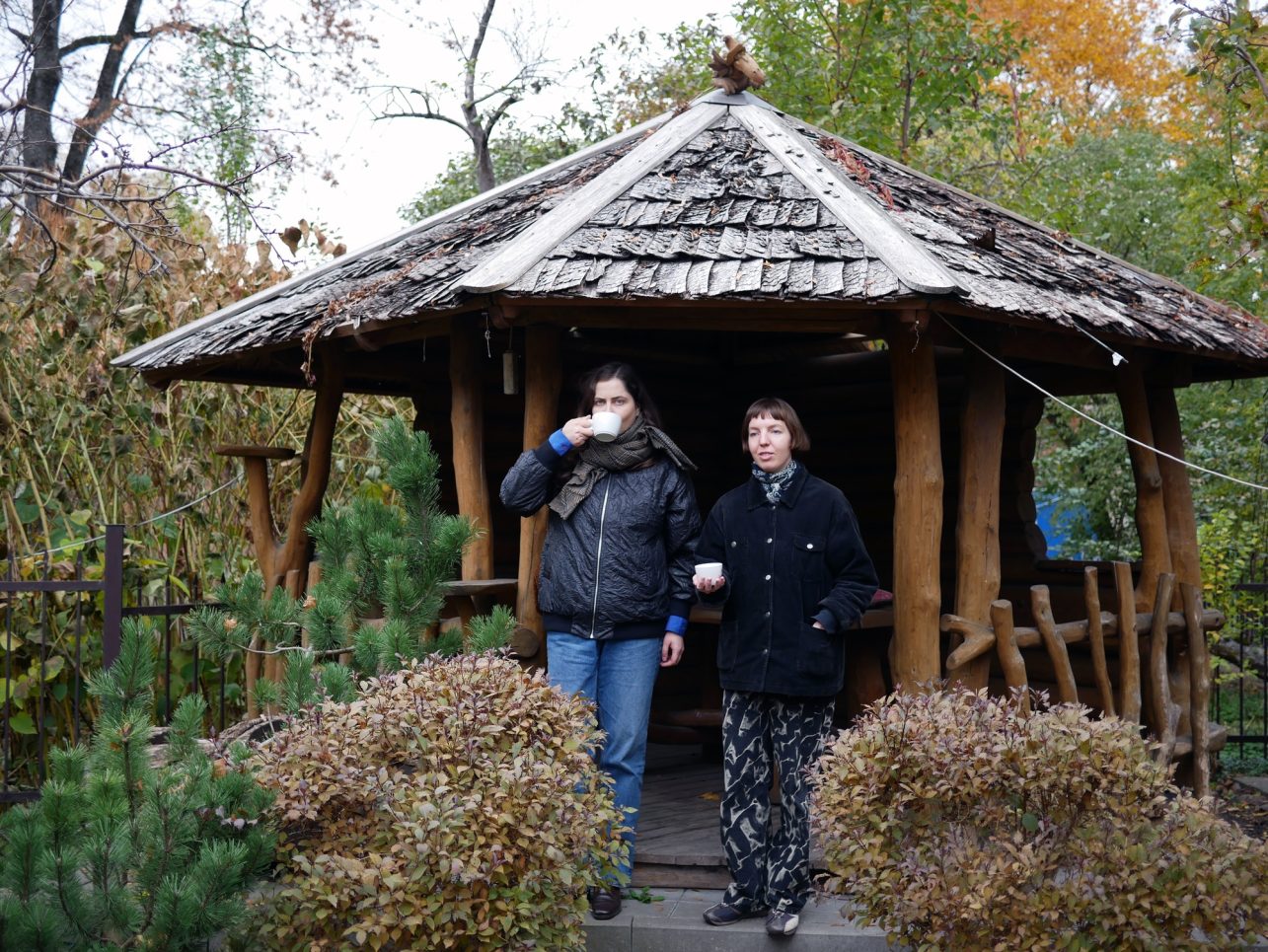
We also present the Glossary of Curvies (kreivuoliai) that will help you become familiar with the key terminology of the topic. The terms resulted from a conversation between the authors of this text while observing wooden gazebos in different parts of the country. This glossary significantly reflects the tone and seriousness of the research.
The Glossary of Curvies
A tuning fork – U-shaped curvie designed to obtain the ideal waves of curvature and thus match the crooked gazebos located in its perimeter. Curvies of this type are often used to decorate the steeple of the gazebo’s roof in order to spread the waves as widely as possible.
A slingshot – a slingshot-shaped curvie usually installed in the porch of the gazebo or in its four corners, capable of performing the defensive function of a fortress, if the gazebo had to be defended from unwanted persons.
A snake – any object, animate or inanimate, characterized by an elongated, unpredictably sinuous shape.
Stained-glassing – curvilinear fragmentation of the landscape as seen from the inside of the gazebo, as if framing it into many separate fragments.
Elephant-snake – a monumental, large, crooked piece, usually serving as the main supporting structure.
Little snake – a small, insignificant curvie typically serving a decorative function, especially useful for stained-glassing.
A crooked pagan priest – a mythical creature, considered to be the patron saint of curvature, which used to fly by flapping its wooden wings, making straight trees a bit more crooked and providing people with relaxation.
* * *
Based on our experience, we can say that the highest concentration of curvies is found in the settlements of Dzūkija and Žemaitija. Finally, after having travelled around almost all of Lithuania on the trails of the curvies, this time our eyes turned to Kaunas and its surroundings: it was time to find out how badly these wooden snakes have encircled the city. Before arriving, we consulted a lot of locals, spent long hours on Google Street View walking along the right and wrong paths, and finally came up with a compact route that included a few gazebos hiding in the backyards of houses and a few eateries – two of them were roadside barbecue joints, one restaurant-hotel, and a beer bar.
The curvies have an aura – as if a tribe of gatherers without complex technical ambitions had brought pieces of wood from the forest, one by one, to create a gazebo.
The oldest recreational space of significant size in Lithuania with crooked structures that we have found was in Druskininkai – the Park of Healing Physical Culture, founded by Karolis Dineika in 1952. Skilled forester Vytautas Urnevičius, using the wood found in the surrounding pine forests, decorated the path of Sun located in K. Dineika’s park with “ancient structures that blend in with nature.” Archival photographs show the original appearance of the park, which was a true oasis of small, crooked architecture.
According to some sources, an original inn named Užuovėja was established in the abandoned mill of Šeduva in 1967. It marked the beginning of the use of national kitsch elements in the interiors and exteriors of cafes, restaurants, and bars. The curvie eventually became an integral part of the decor of this type of dining establishment.
The first advertisement promoting the mass production of crooked gazebos in Lithuania comes from the website of the company Laukbaldis, which was founded in 1996. It says, “We were the first in Lithuania to manufacture this product and beautify your environment!” According to State Forest Enterprise, the most intensive development of campsites, recreation sites, and rest areas in Lithuania took place between 2005 and 2008, before the financial crisis.
Given these dates, the curvie does’t seem to be an old phenomenon. It could be seen as a simulacrum of archaic, traditional, folkloric aesthetics, a retrospective of historicism.
During our expeditions around Lithuania, we interviewed the proud owners of the crooked gazebos, the craftsmen who design/manufacture them, the employees of companies involved in the serial production of this type of gazebo, municipal officials responsible for recreational areas, etc. The study sought to understand the subtle relationship between the crookedness of wood and the quality of relaxation.

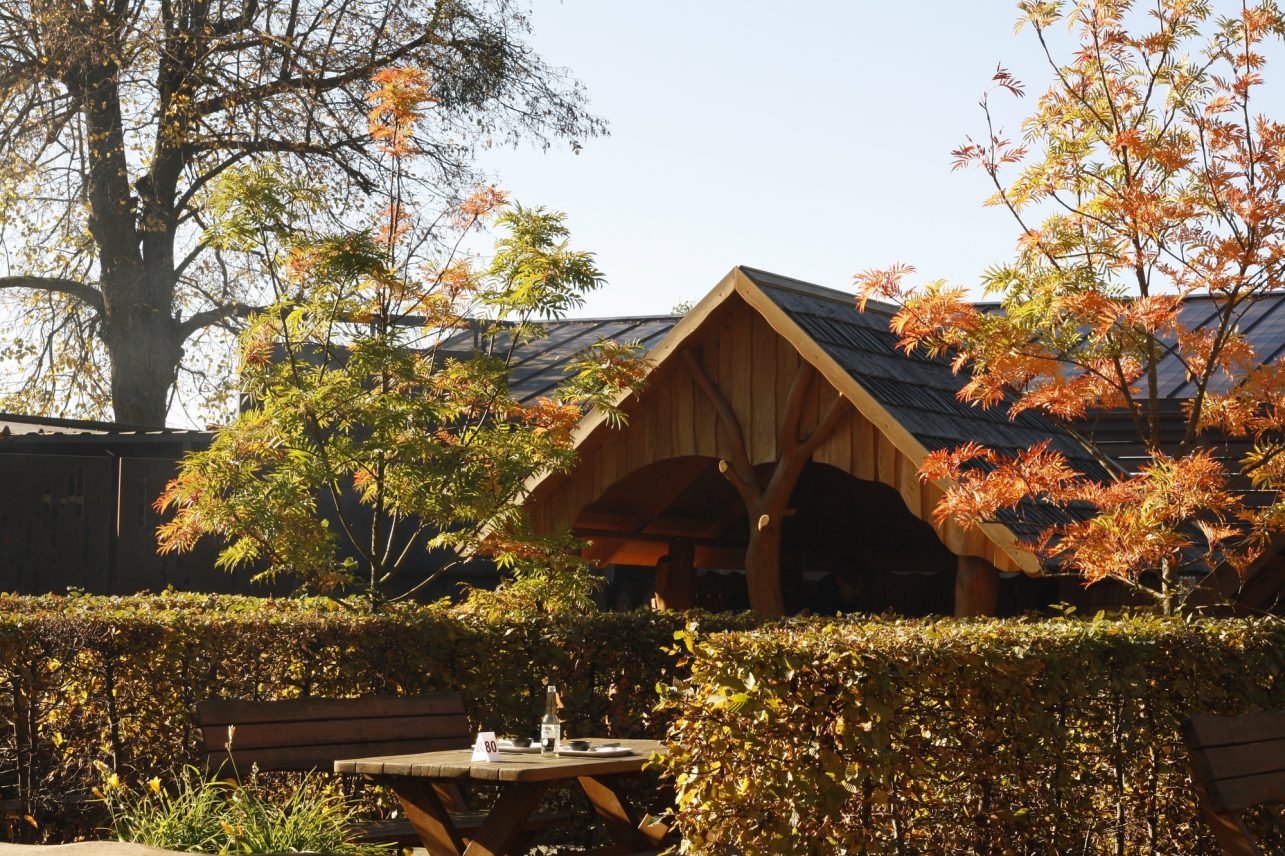
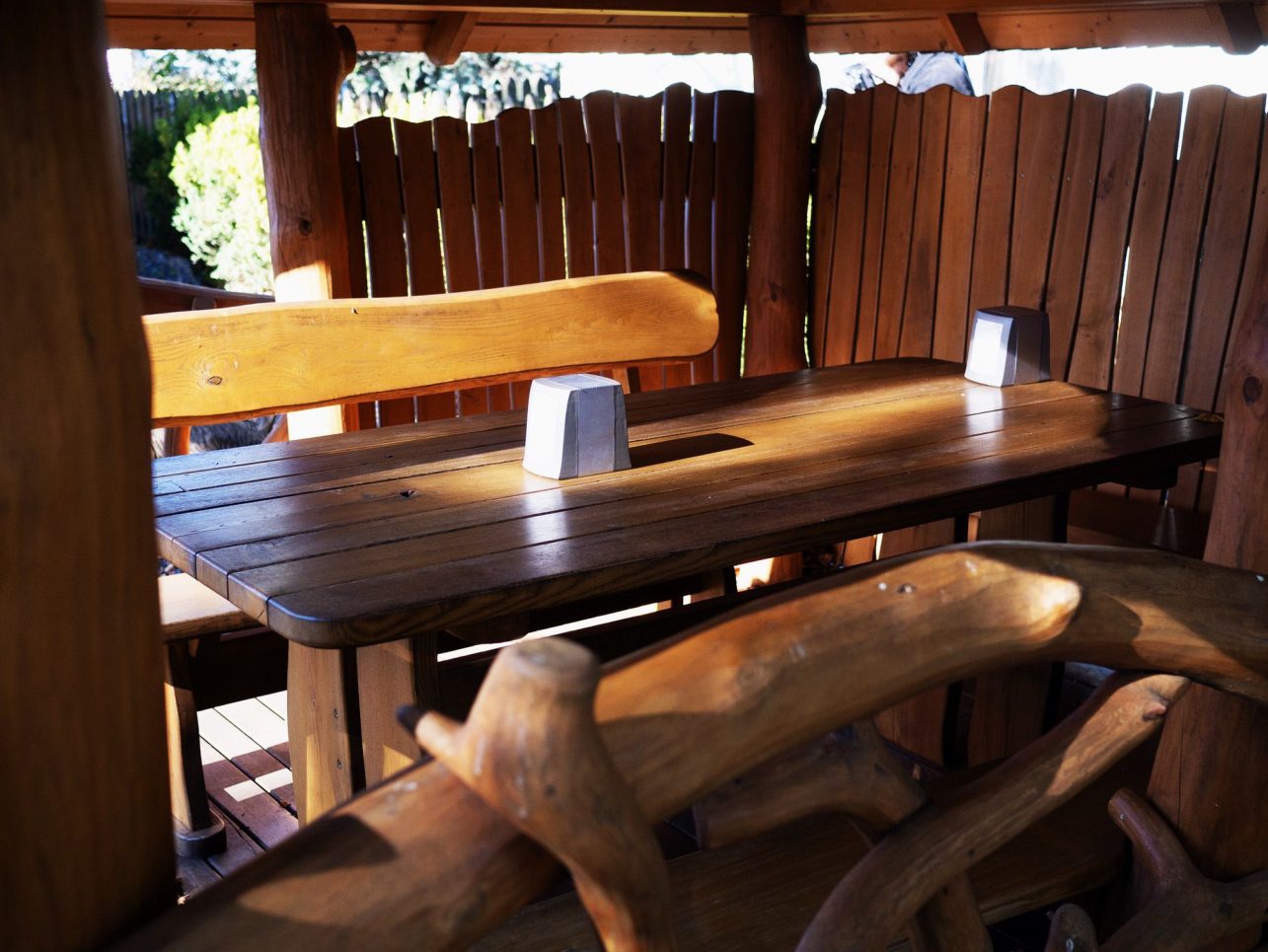
Almost all of the craftsmen interviewed, except for the larger outdoor furniture companies, stressed the importance of improvisation, asserted that they do not prepare drawings for these gazebos, and highlighted “imagination” and “creativity” as important factors for a successful outcome. At least a few interviewees also made it clear that making gazebos out of crooked wood is like art therapy for them, and for some, gazebos are a catalyst for obsession. When we asked about the principles of using curvies in the construction of gazebos, we received these answers: “The curvier the better”, “One man’s firewood is another man’s creativity”, and “I just glued it together. Stick after stick. These are my stick-togethers”, “These are my night visions”, and “We were looking for more interesting trees, and here’s what we did with our fantasies.” One of the gazebo owners interviewed in Kaunas said that he has been seeing his future “gazebo queen” for a long time in his reveries and prophetic dreams.
The aesthetics of curvies seem to appeal to naturalness, but one of the trends of crooked design is to paint the wood a bright orange colour. After visiting the workplaces of various manufacturers, it became clear that it is possible to create a wide-spectrum yellow-orange color palette that successfully competes with the natural color of wood in the production of curved gazebos. One craftsman said that this orange colour gives the wood a natural look. And the naturalness of the colour of the gazebos belonging to the Pakaunė shashlik restaurant Šašlykai XXL has reached the heights of burgundy red.
A similar relationship with naturalness can be found in the covering of gazebo roofs. In the past, they were covered with wood shingles, slate, tiles, and straw, and more recently bituminous tiles have become very popular.
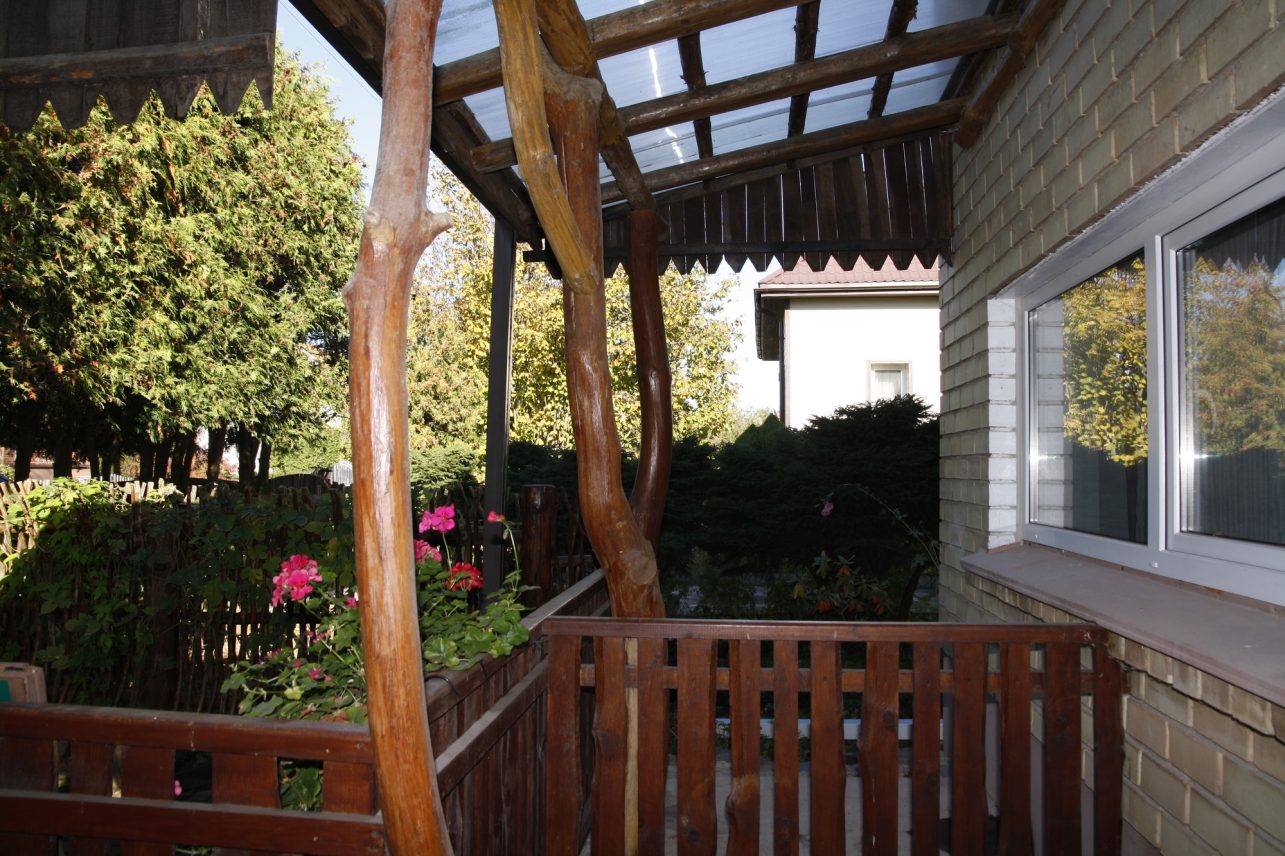
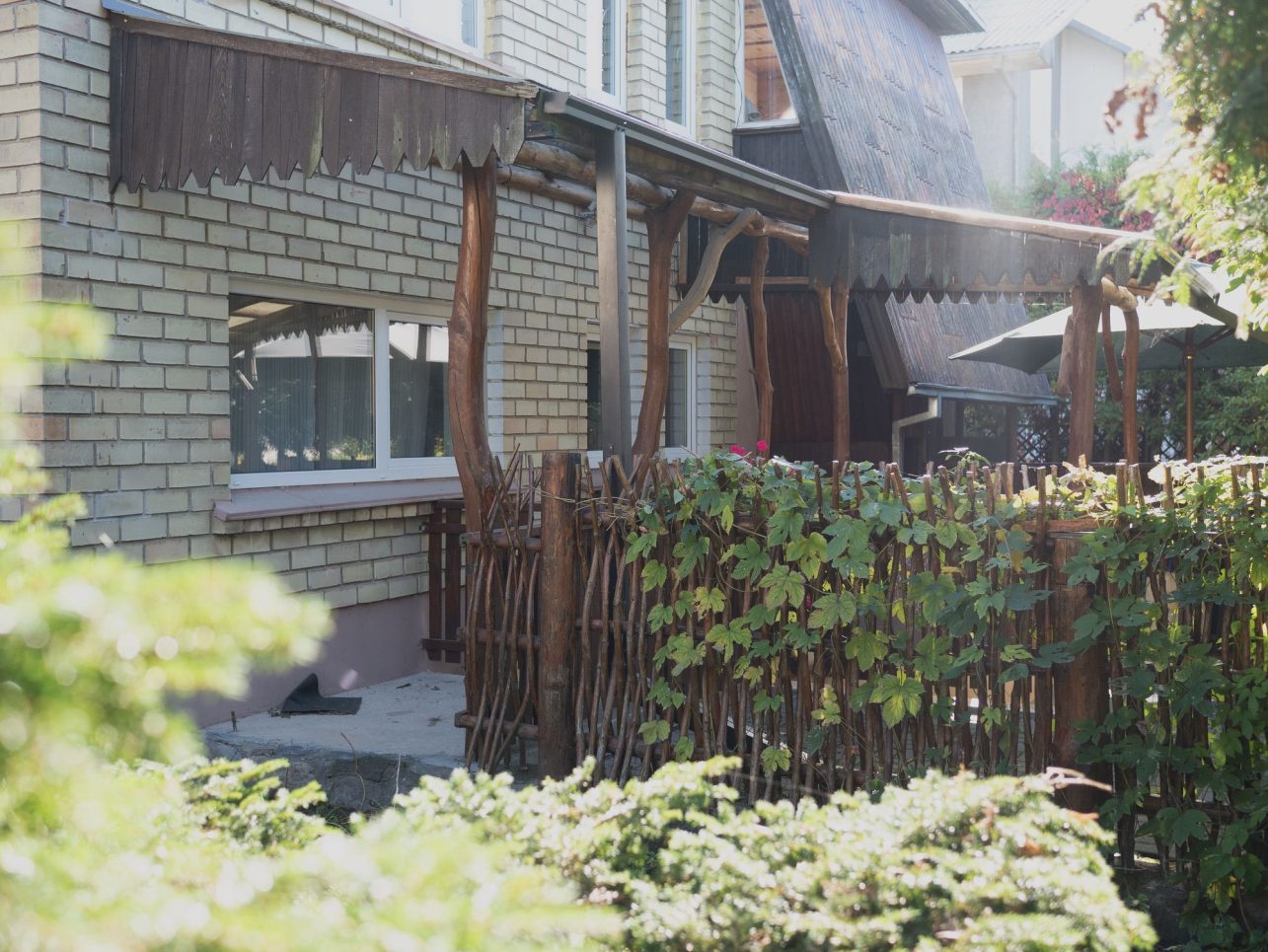
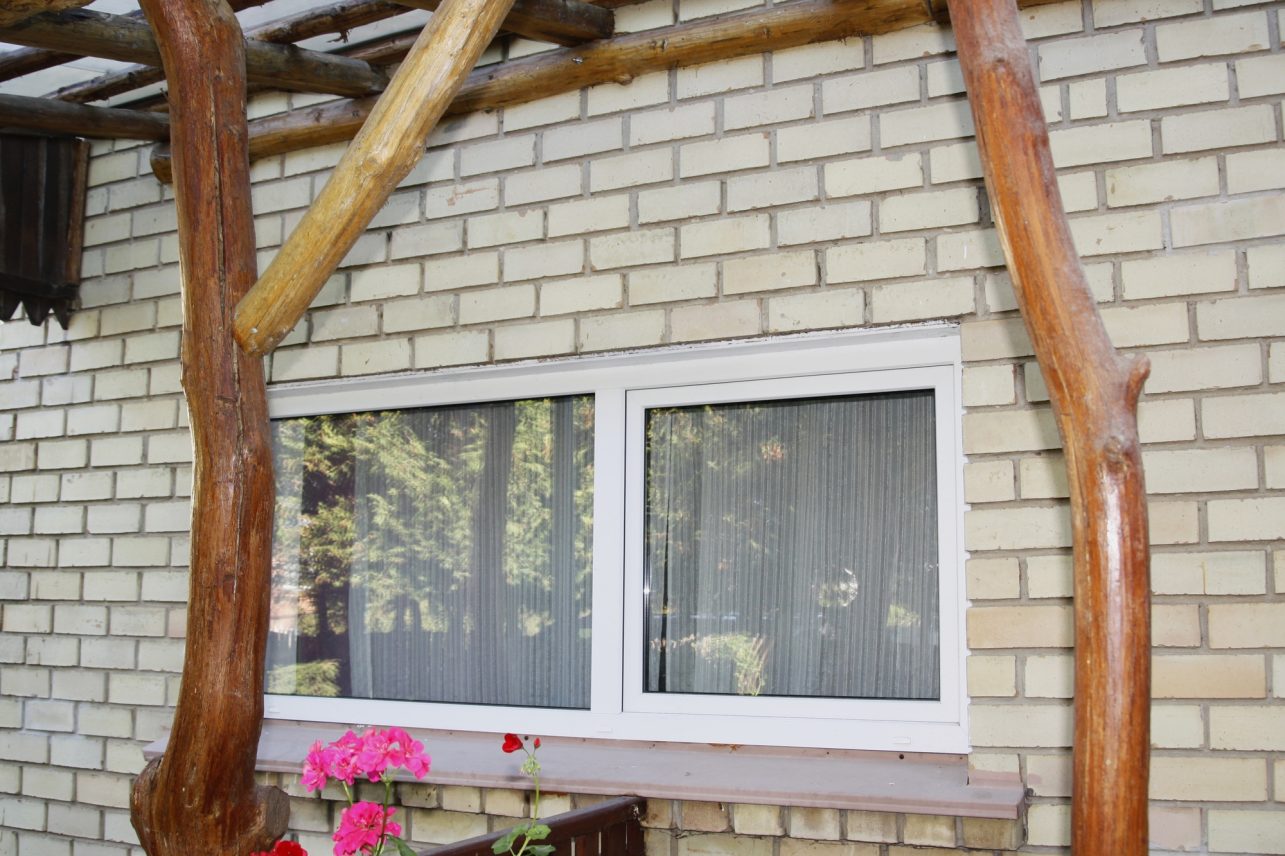
The most common crooked shapes are found in their natural environment, such as rural tourism cabins, educational trails, forest campsites or private plots. However, they also find a place in contrasting urban areas, such as the courtyards of blocks of flats, the recreational areas of factories, or on the highway, by the petrol stations or restaurants selling grilled dishes of various national cuisines.
In such cases, the purpose of the crooked gazebo seems to be to isolate the guests in the atmosphere of nature or the campsite and to protect them from the external threats of decay and modernity. It was in an Armenian roadside shashlik restaurant near Druskininkai, some fifteen years ago, that these researchers first paid serious attention to the extravagance of the curvies, their blatant distortion of the roadside aesthetics, and the somewhat claustrophobic sense of a wooden snakes’ nest which, strictly separated the curvie’s traveler from the environment around him.
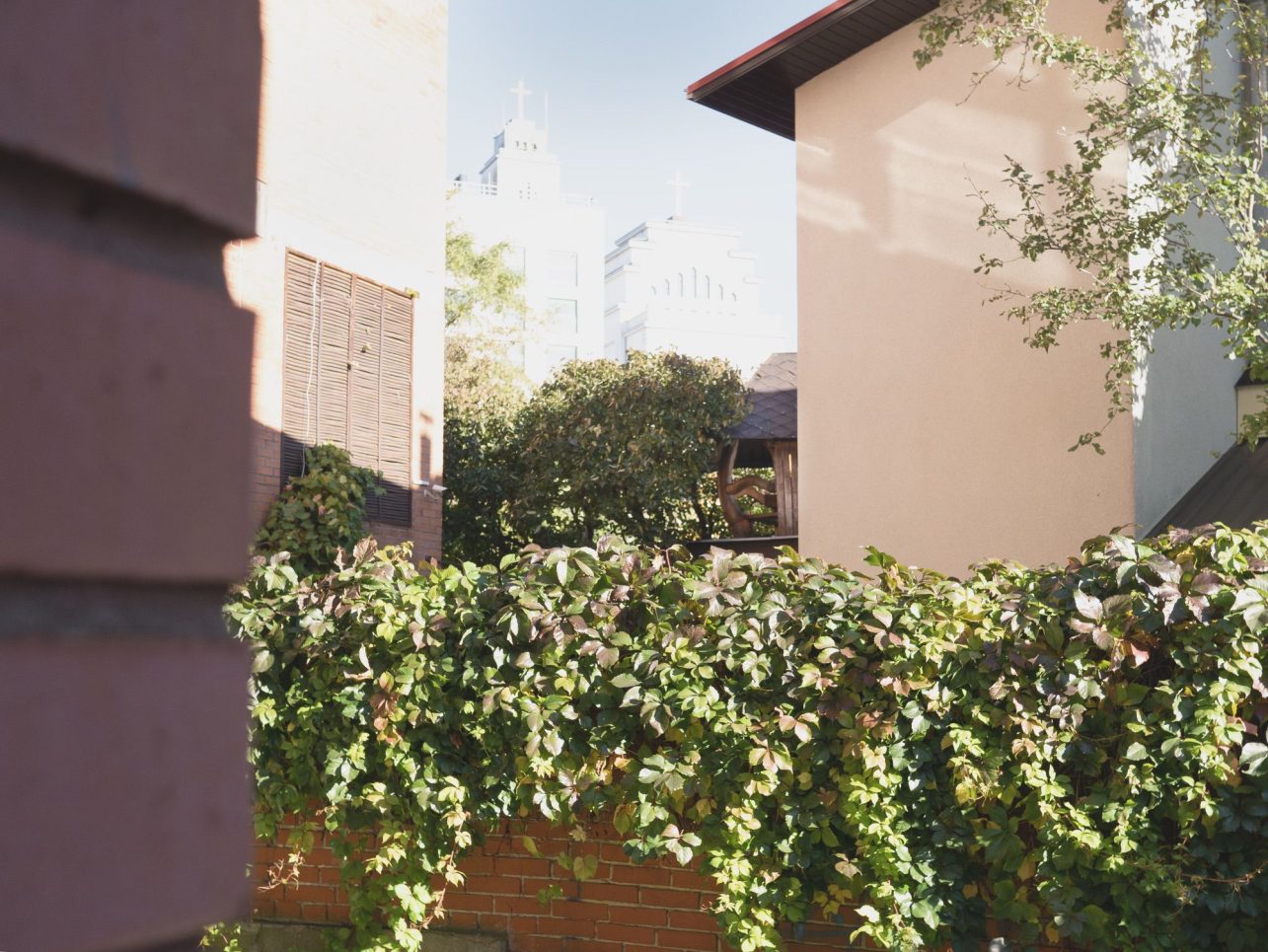
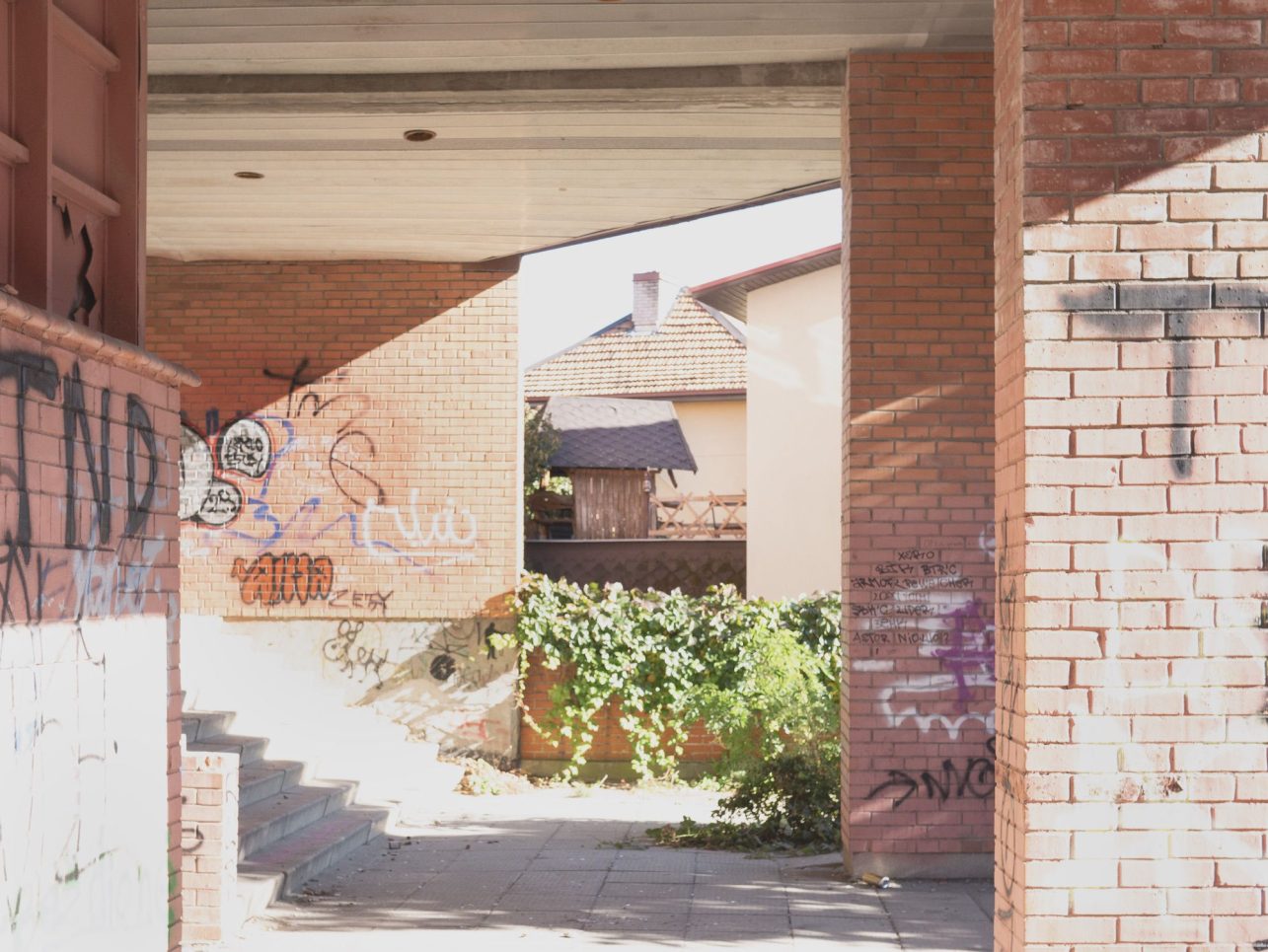
Such contrasts are also present in Kaunas, for example, in a single composition, one might see a crooked gazebo placed alongside the Christ’s Resurrection Church and the closed Radio Factory’s Cultural Center Šilelis. Or a twisted nest of wooden snakes leaning against the slope of Vytautas Hill, barely visible through the facades of surrounding interwar period buildings. The latter, treasured by its owners like a grazing animal, is fenced off by an electric shepherd.
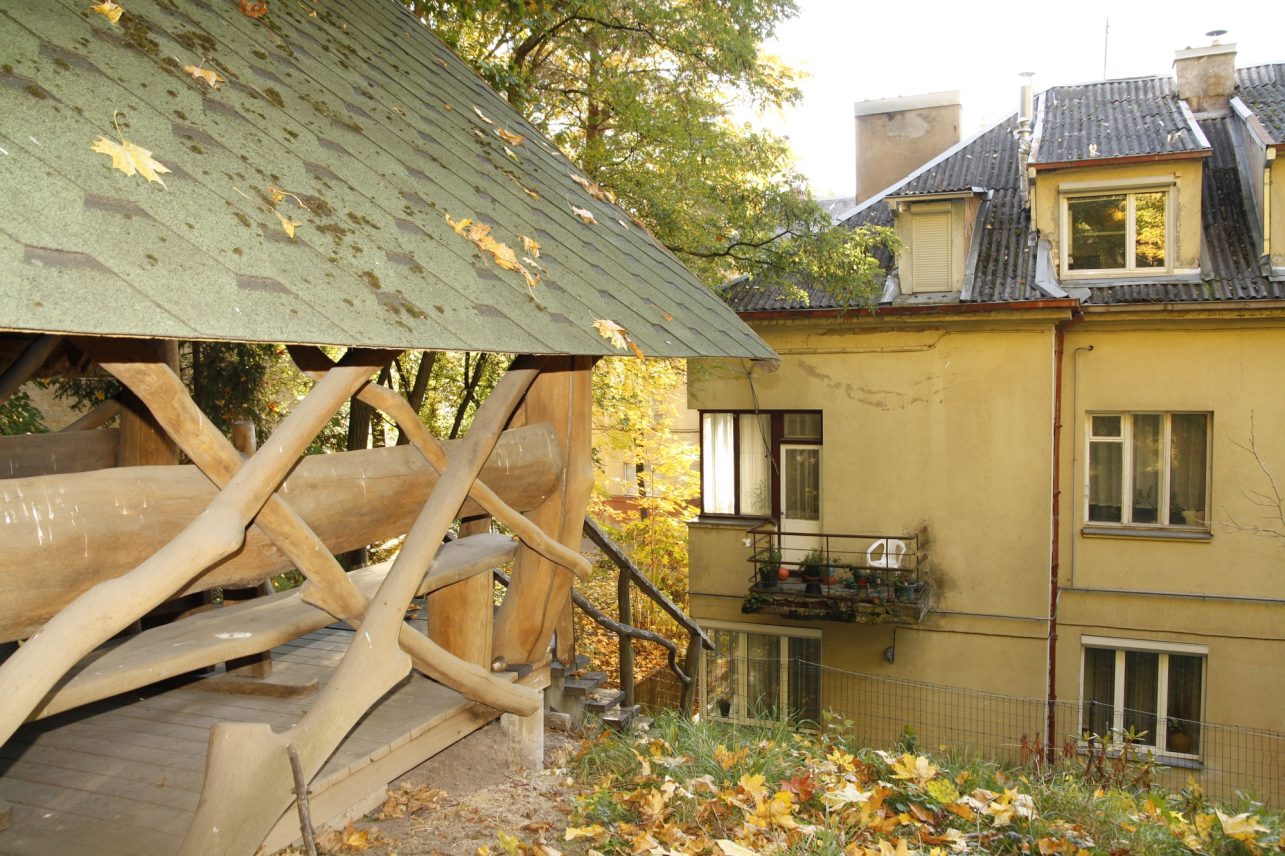
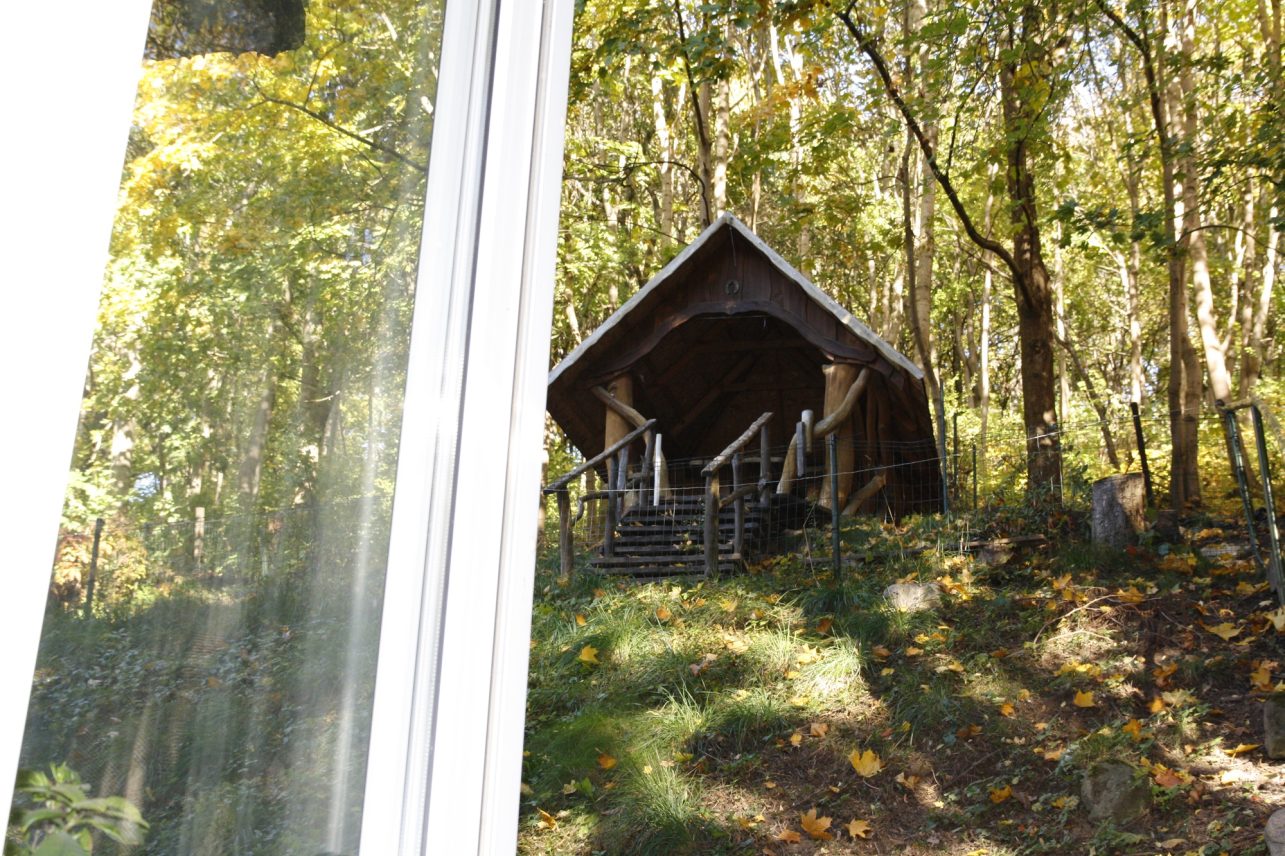
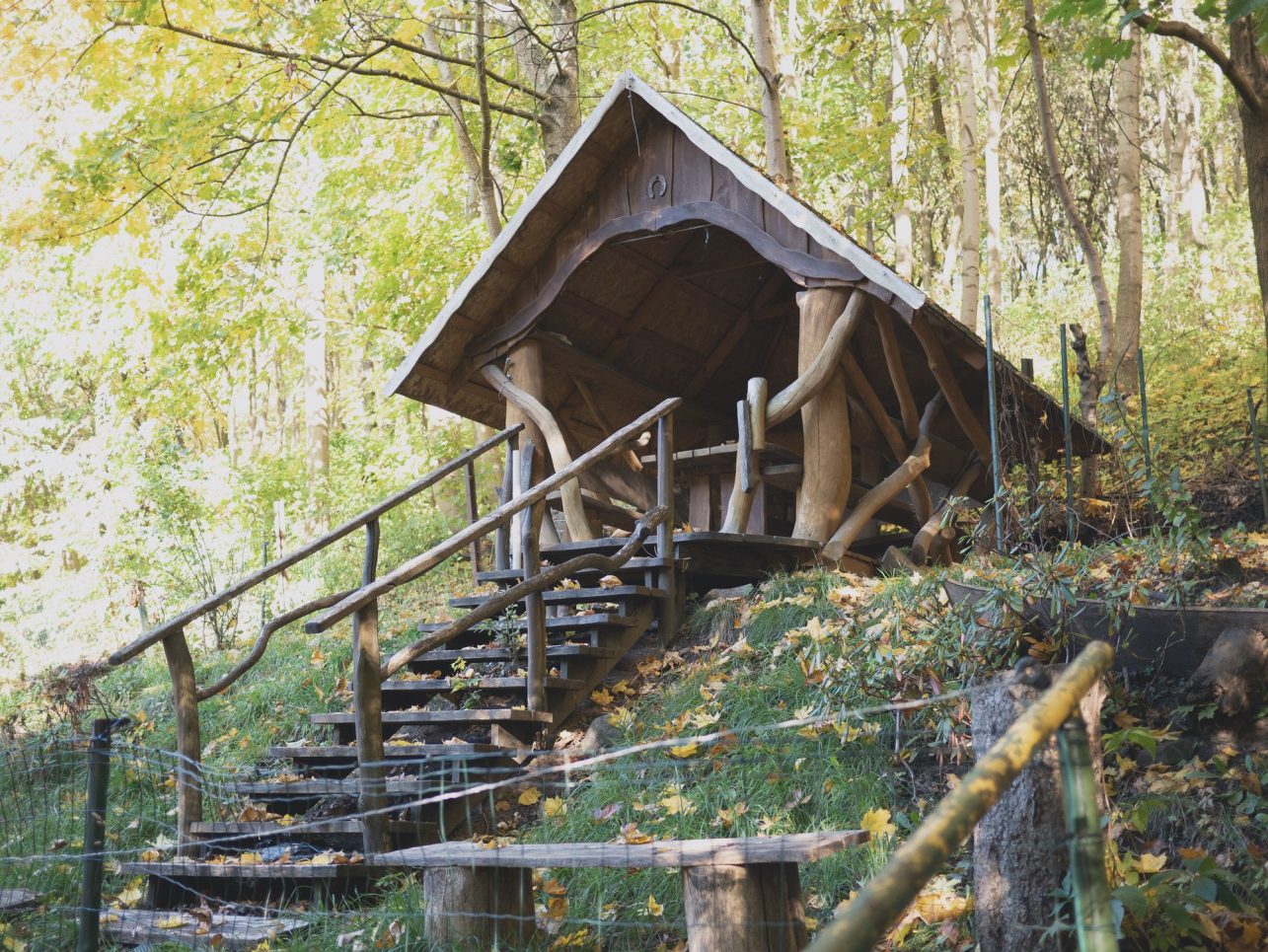
Nevertheless, as one might expect, the highest concentration of Kaunas’ curvies is clustered in roadside eateries and bars. Both grilled meat restaurants had backyards full of crooked gazebos. The view of a little town stuffed with quirky structures or a row of curvies lined up side by side slightly diminishes the sense of uniqueness, the impression of a one-of-a-kind handmade item that we should probably get from looking at these pantheons of naturalness and authenticity.
We were pleasantly surprised by the unprecedented interpretation of a wooden curvie found at the restaurant Svarstyklės: the terrace’s supporting metal roof structures, with their branching shapes and vibrant orange tones, echoed the concept of the crooked aesthetic. In fact, this crooked décor made of straight pipes reflects the prevailing preference in Kaunas for “straighties” – recreational spaces are dominated by gazebos, swings, and outdoor furniture made of smooth, straight boards, while a curvie becomes a rare exotic, an exception to the rule.
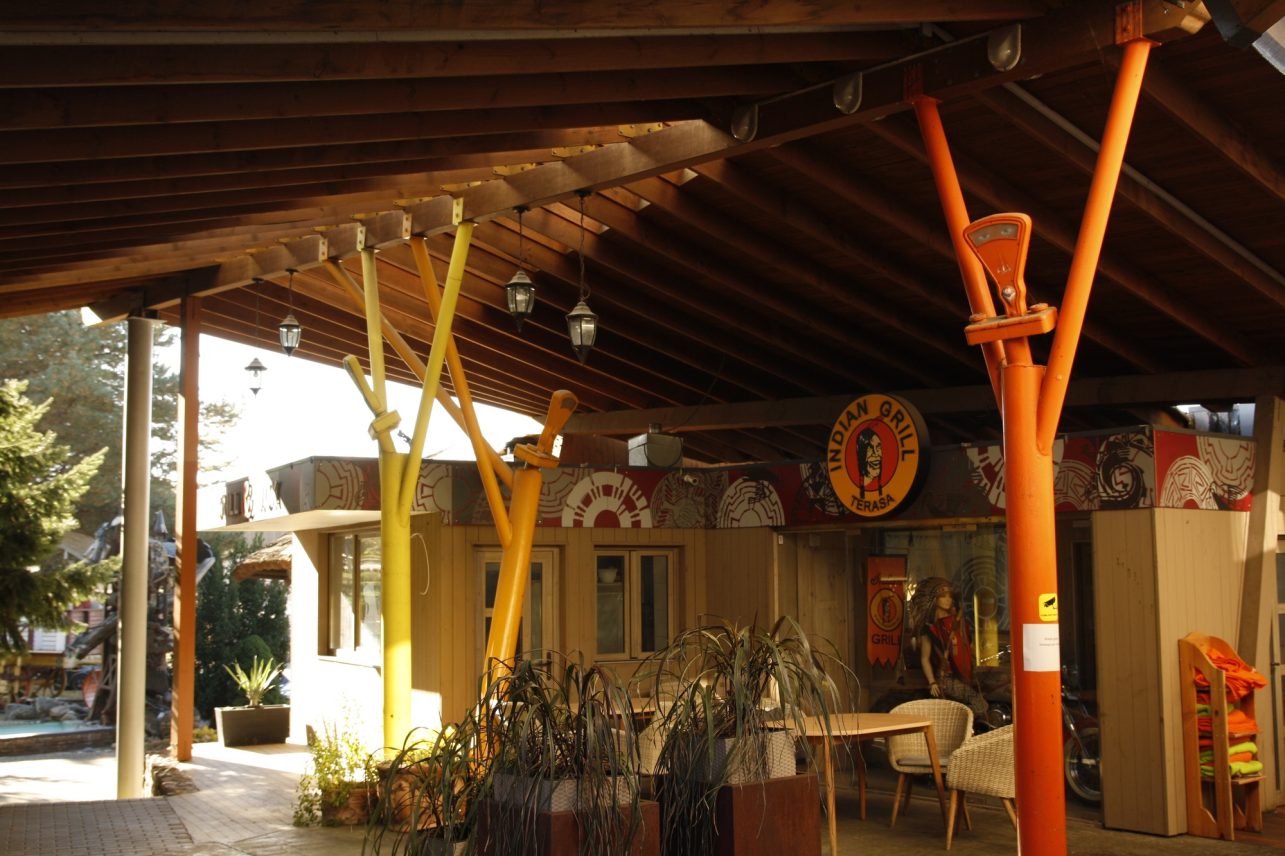
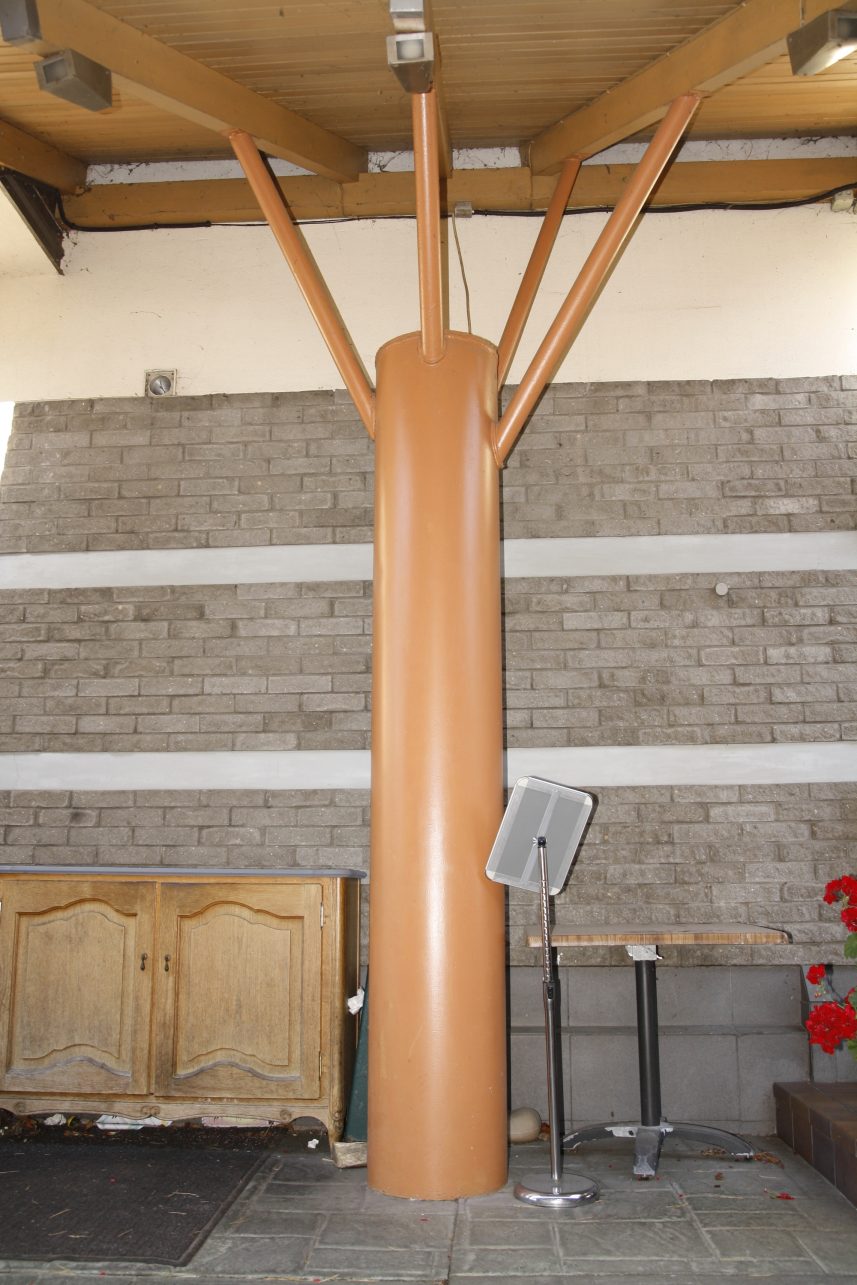
It’s important to note that crooked gazebos are becoming endangered species across the country both due to shifting trends in style and decisions by municipalities and forestry offices that had once installed them in large numbers but now plan to follow European Union guidelines to create unified designs that meet safety standards. So, the meandering and unpredictable curvie becomes inconvenient. This trend is illustrated by the recent closing of Baublio restaurant, the interior of which was full of crooked solutions – from the bar furniture to the lighting fixtures and other decoration elements. One of the employees said that the restaurant would be modernized, and when asked about the former crooked interior the interviewee added with a touch of regret that “people don’t need these kinds of things anymore”.
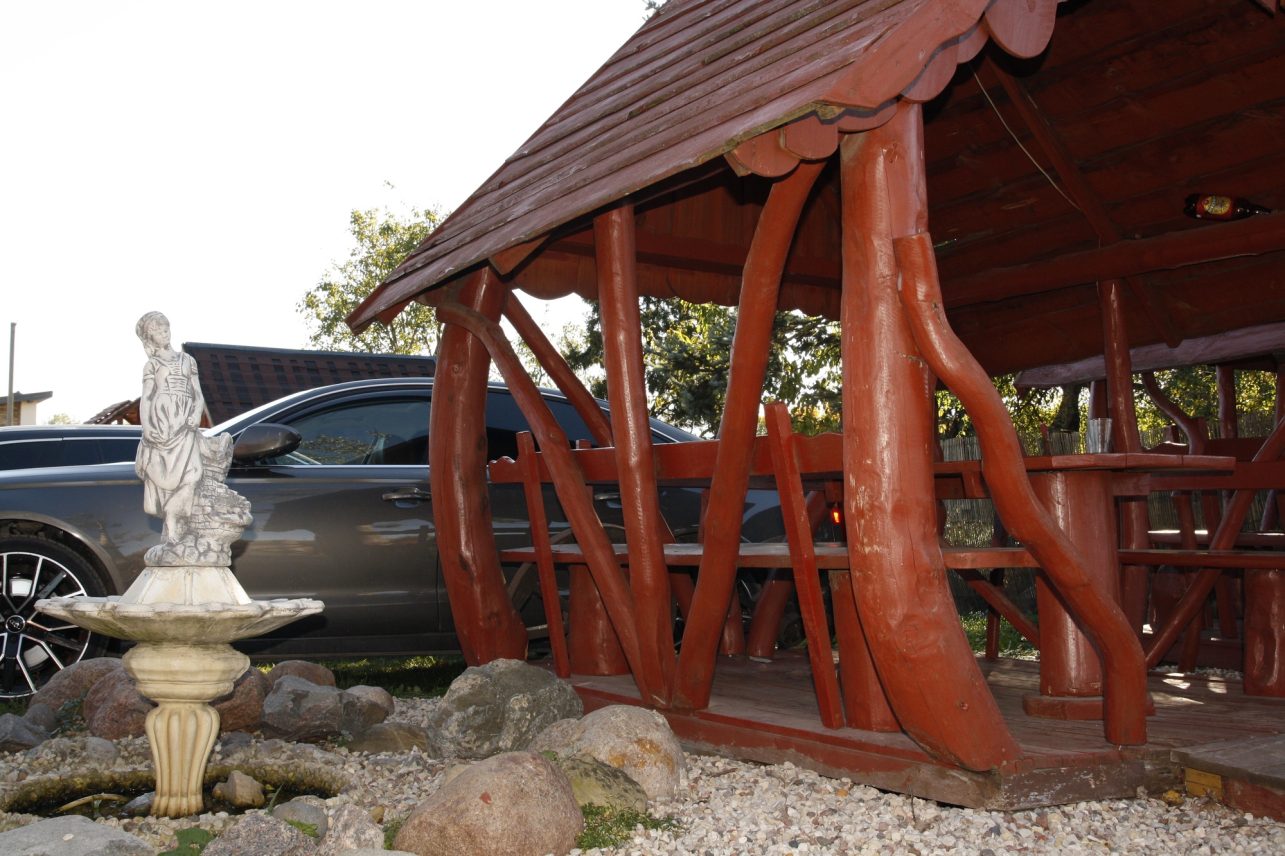

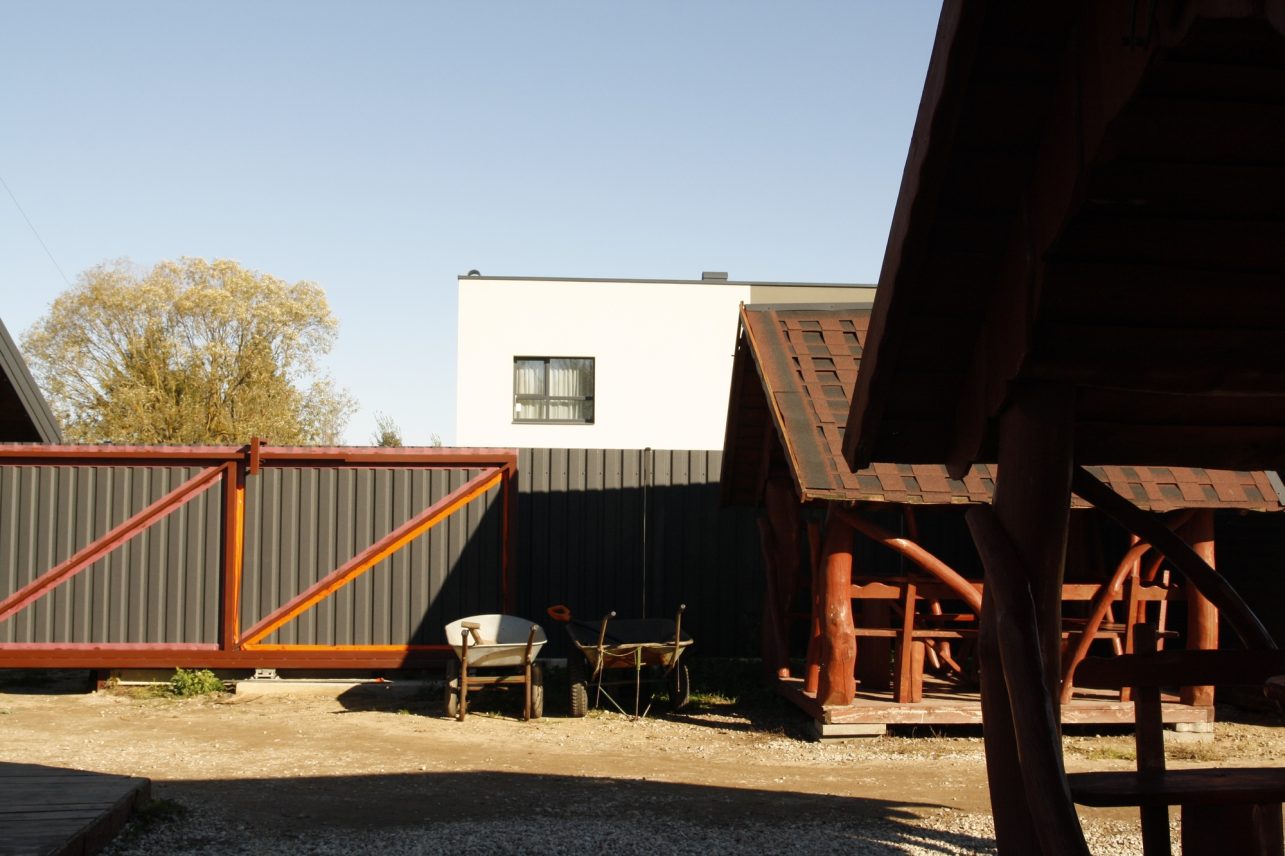
Of course, if we were to launch a national search for curvies, dozens or even hundreds of new curvies in Kaunas and everywhere else would come to light, as they mostly like to hide in the more remote corners of the back yard or garden, where they can give owners and their guests the illusion of being away from civilization.
Despite the decline in the popularity of crooked architecture, sooner or later, the incredible shapes found in all corners of Lithuania will inspire a passer-by to make a creative breakthrough, and the crooked pagan priest will generously reward such a person with quality relaxation in the gazebo.

